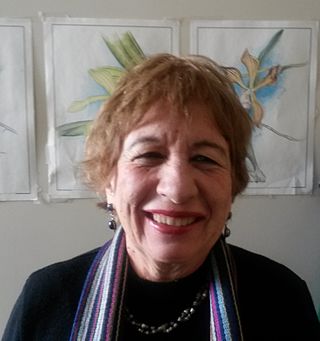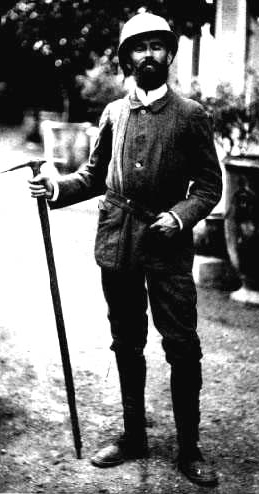Related Research Articles

The Paris Observatory, a research institution of the Paris Sciences et Lettres University, is the foremost astronomical observatory of France, and one of the largest astronomical centers in the world. Its historic building is on the Left Bank of the Seine in central Paris, but most of the staff work on a satellite campus in Meudon, a suburb southwest of Paris.
A public hospital, or government hospital, is a hospital which is government owned and is fully funded by the government and operates solely off the money that is collected from taxpayers to fund healthcare initiatives. In some countries, this type of hospital provides medical care free of charge to patients, covering expenses and wages by government reimbursement.
A notifiable disease is any disease that is required by law to be reported to government authorities. The collation of information allows the authorities to monitor the disease, and provides early warning of possible outbreaks. In the case of livestock diseases, there may also be the legal requirement to kill the infected livestock upon notification. Many governments have enacted regulations for reporting of both human and animal diseases.
The European Audiovisual Observatory is a public service organisation, part of the Council of Europe set up in 1992.
The fundaments of the Brazilian Unified Health System (SUS) were established in the Brazilian Constitution of 1988, under the principles of universality, integrality and equity. It has a decentralized operational and management system, and social participation is present in all administrative levels. The Brazilian health system is a complex composition of public sector (SUS), private health institutions and private insurances. Since the creation of SUS, Brazil has significantly improved in many health indicators, but a lot needs to be done in order to achieve Universal Health Coverage (UHC).

Saint-Michel-l'Observatoire is a commune in the Alpes-de-Haute-Provence department in southeastern France. It was the death place of 18th-century botanist Jean-Paul de Rome d'Ardène and Taos Amrouche, the French-speaking Algerian writer, singer of Kabyle music, and activist for women's causes.
Basile Adjou Moumouni was a Beninese physician. He was active in his native country when the west Africa country of Republic of Benin was called Dahomey. Spending almost his entire adult life outside his native country, he worked for the World Health Organization in Brazzaville. In the 1968 presidential election, he won with over 80 percent of the vote. This decision was annulled, however, by incumbent President Alphonse Alley because organised demonstrations prohibited almost three-quarters of the electorate from casting their ballots.
Despite India's 50% increase in GDP since 2013, more than one third of the world's malnourished children live in India. Among these, half of the children under three years old are underweight.
Evidence Informed Policy Network (EVIPNet) is a network, sponsored by the World Health Organization (WHO), which attempts to improve public health, especially in developing countries, by coordinating the efforts of policymakers and health researchers.

MORHAN or Movement of Reintegration of Persons Afflicted by Hansen's disease in English, is a non-profit organization that operates to reduce leprosy and the stigma of leprosy in Brazil. This organization was initially created to ensure the rights of patients from leper colonies due to their isolation, and today it is one of the most successful Brazilian social movements, with representation in the National Health Council. The group has used several methods to disseminate information about leprosy including, but not limited to, handing out pamphlets, hosting seminars, and organizing puppet shows for children. Morhan also creates its own publications as a means of mobilization and news regarding leprosy. Furthermore, Morhan has worked with anthropologists to provide explanatory models and lay explanations of leprosy within the Brazilian context. Morhan's work has been exemplary in creating partnerships between social groups and the government and received an award from the United Nation’s Millennium Development Goals. The current National Coordinator is Artur Custodio Moreira de Souza.
The European Observatory on Health Systems and Policies is a public health observatory established through an intergovernmental partnership, hosted by the World Health Organization (WHO) Regional Office for Europe, which specialises in the development of health systems within Europe.

Cristina Possas de Albuquerque is a Brazilian public health scientist working with infectious diseases and emerging infectious diseases from an eco-social perspective.

The Sept Îles Archipelago Regional Park is a proposed protected area in the Côte-Nord region of Quebec, Canada. The islands are important to migratory sea birds, and are also of interest to tourists. The management plan was prepared in 2008.
The Genetic Discrimination Observatory (GDO) is a Montreal-based international network of researchers and other stakeholders who support the research and prevention of genetic discrimination (GD)—discrimination based on genetics or other predictive health information. Their headquarters are currently located at the Centre of Genomics and Policy at McGill University in Montreal.

Victor G. Rodwin is professor of health policy and management at the Robert. F Wagner Graduate School of Public Service, New York University where he has taught since 1985. He is also co-director, with Michael Gusmano, of the World Cities Project, a joint venture of NYU Wagner, The Hastings Center, and the Rutgers University School of Public Health.

Vaccination in Brazil includes all the practice and social issues related to vaccines in Brazil.
Asa Cristina Laurell is a Mexican sociologist who has had a long career in both research and government positions. She grew up in Sweden, but her education eventually brought her to Mexico. In Mexico, she was awarded two degrees and conducted research that focused on health policy, including ensuring access to health care for people in Mexico and various other Latin American countries. She is known for her role in helping to found the Latin American Association of Social Medicine (ALAMES), as well as the contributions she has made to widening access to health care for Mexicans during her time in government. This included serving as Undersecretary of Integration and Development at the Ministry of Health in Mexico.

The COVID-19 pandemic in Normandy, is part of the worldwide pandemic of coronavirus disease 2019 (COVID-19) caused by severe acute respiratory syndrome coronavirus 2 (SARS-CoV-2). The virus was confirmed to have reached Normandy on 27 February 2020,

Joseph Vallot was a French scientist, astronomer, botanist, geographer, cartographer and alpinist and "one of the founding fathers of scientific research on Mont Blanc". He is known mainly for his fascination with Mont Blanc and his work in funding and constructing a high-altitude observatory below its summit, and for the many years of study and research work that he and his wife conducted both there, and at their base in Chamonix. The observatory and adjacent refuge that he constructed for use by mountain guides and their clients attempting Mont Blanc summit both still bear his name today, despite being rebuilt in modern times.
References
- 1 2 Aspinall, Peter J.; Jacobson, Bobbie; Castillo-Salgado, Carlos (2016-08-01). "Establishing and sustaining health observatories serving urbanized populations around the world: scoping study and survey". European Journal of Public Health. 26 (4): 681–686. doi: 10.1093/eurpub/ckw007 . ISSN 1101-1262. PMID 26888882.
- ↑ Caiaffa, W. T.; Friche, A. A. L.; Dias, M. A. S.; Meireles, A. L.; Ignacio, C. F.; Prasad, A.; Kano, M. (2014-02-01). "Developing a Conceptual Framework of Urban Health Observatories toward Integrating Research and Evidence into Urban Policy for Health and Health Equity". Journal of Urban Health. 91 (1): 1–16. doi:10.1007/s11524-013-9812-0. ISSN 1468-2869. PMC 3907625 . PMID 23974945.
- ↑ Gattini, Cesar (2009). Implementing National Health Observatories, Operational Approach and Strategic Recommendations. Santiago: PAHO/WHO Office in Chile. p. 8. ISBN 978-956-8246-05-1.
- ↑ "OBSERVATOIRE : Définition de OBSERVATOIRE". Centre National de Ressources Textuelles et Lexicales (in French). University of Lorraine . Retrieved 2021-09-18.
{{cite web}}: CS1 maint: url-status (link) - ↑ Chebroux, Jean-Bernard (2011-05-18). "Les observatoires locaux : quelle méthodologie pour les conduire ?" [Local observatories: what methodology to drive them?]. Socio-logos: Revue de l'association française de sociologie (in French) (6). doi: 10.4000/socio-logos.2620 . ISSN 1950-6724.
- ↑ Rouchet, Jean (1999). "Les observatoires économiques et sociaux" [Economic and social observatories]. Les Rapports du CNIS (in French). 53– via Epsilon.
- ↑ Hemmings, J.; Wilkinson, J. (2003-05-01). "What is a public health observatory?". Journal of Epidemiology & Community Health. 57 (5): 324–326. doi:10.1136/jech.57.5.324. ISSN 0143-005X. PMC 1732445 . PMID 12700213.
- ↑ Wilkinson, John (2015). "Public Health Observatories in England: recent transformations and continuing the legacy". Cadernos de Saúde Pública. 31 (suppl 1): 269–276. doi: 10.1590/0102-311x00100414 . ISSN 0102-311X. PMID 26648381.